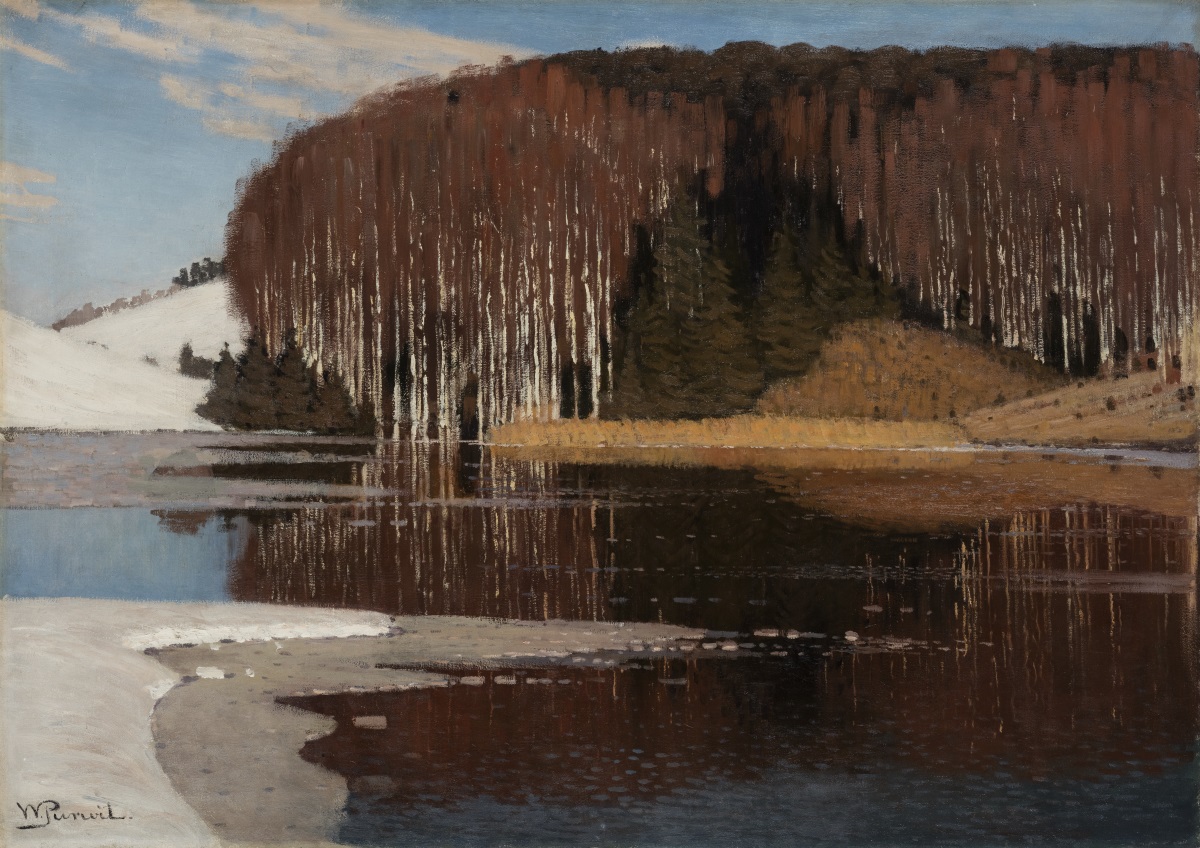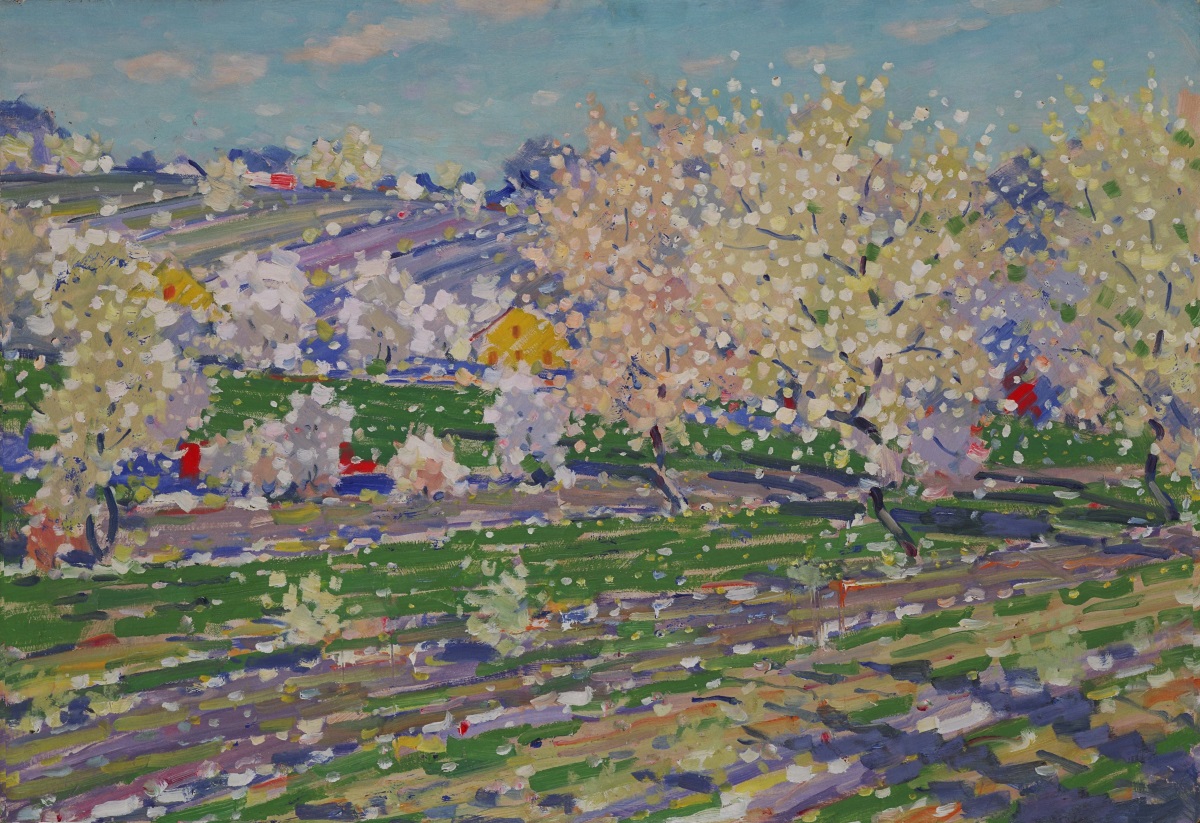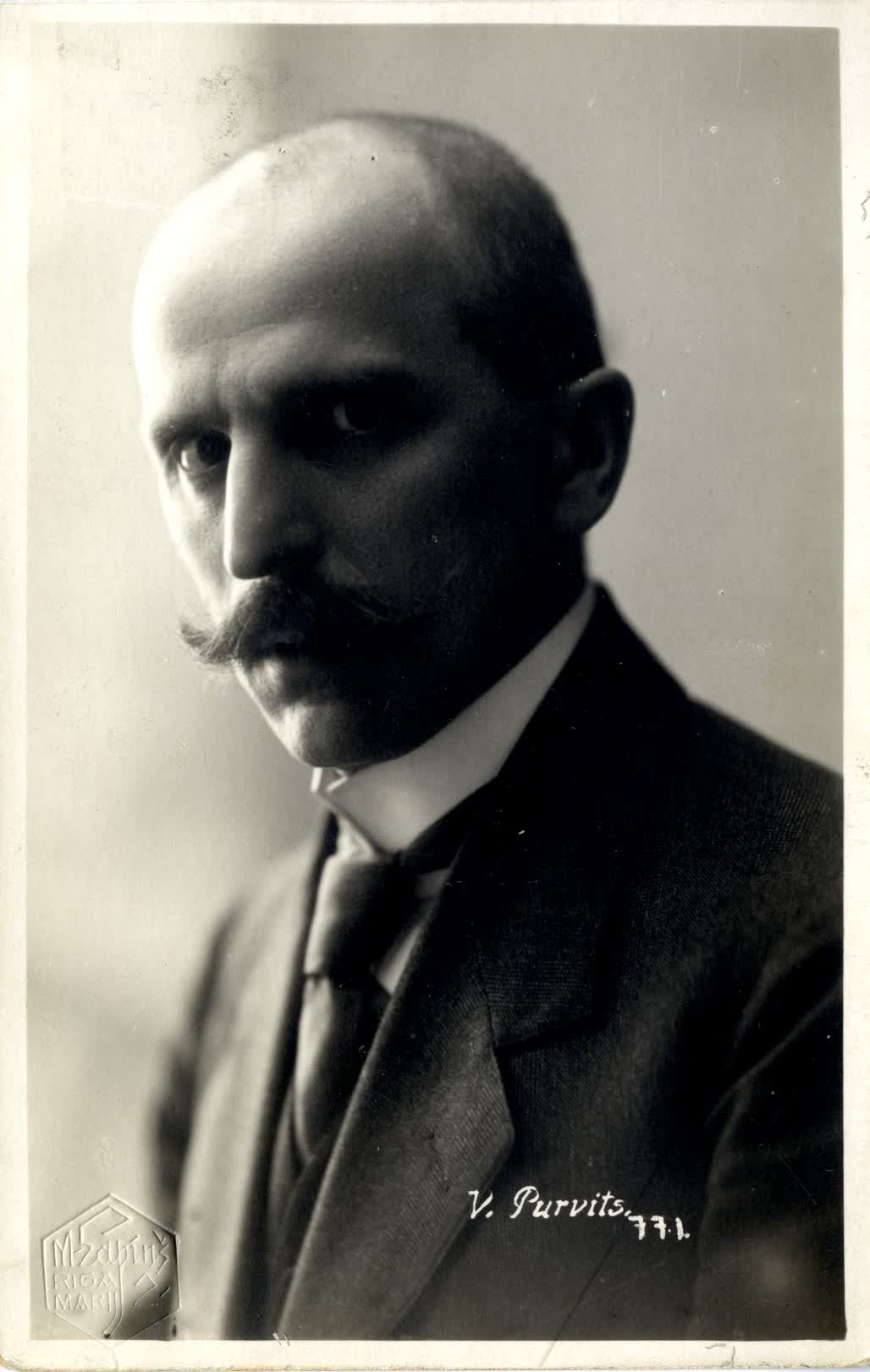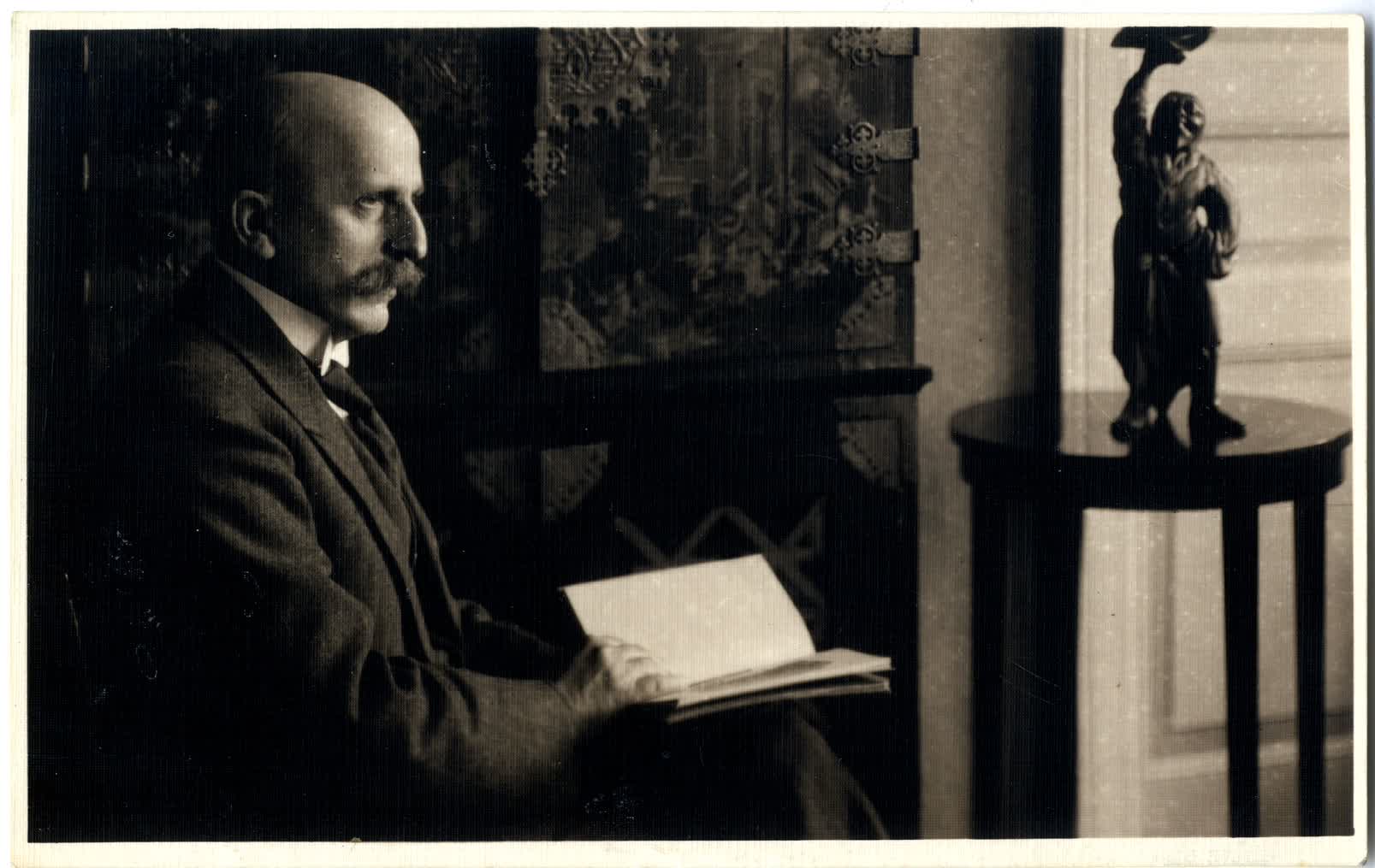Painted Landscapes "Spring Waters (Maestoso)", ca. 1910, "Winter", ca. 1910, and "In the Spring (Springtide)", 1933–1934, by Painter Vilhelms Purvītis (1872–1945)
The nature featured in Vilhelms Purvītis’ paintings “Spring Waters (Maestoso)” (Pavasara ūdeņi (Maestoso)), “Winter” (Ziema), and “In the Spring (Springtide)” (Pavasarī (Ziedonis)) is a typical Latvian landscape at different times of the year. With these paintings, Purvītis laid the foundation for Latvian landscape painting.
Ābele, Kristiāna. (sast., red., ievada aut.). (2022). Vilhelms Purvītis Eiropas mākslas ainavā: veikums, laikmets un mantojums: zinātniska konference 2022. gada 16.–17. septembrī: referātu tēzes. [Rīga]: Latvijas Mākslas akadēmija.
Balodis, F. (1939). Vilhelms Purvītis. Rīga: Senatne un Māksla.
Ceriņa, Valda. (2018). Vilhelms Purvītis – ainavu gleznotājs = Vilhelms Purvītis als Landschaftsmaler von 1890 bis 1910. [Inčukalna novads]: [Valda Ceriņa].
Kļaviņš, Eduards. (2014). Vilhelms Purvītis. Rīga: Neputns.
Kļaviņš, Eduards. (2014). Vilhelms Purvītis un viņa gleznas. No: Eduards Kļaviņš (sast.). Latvijas mākslas vēsture. 4. sēj.: 1890-1915 (208.-215., 247.-254. lpp.). Rīga: Latvijas Mākslas akadēmijas Mākslas vēstures institūts; Mākslas vēstures pētījumu atbalsta fonds.
Slava, Laima (sast.). (2022). Purvītis. Rīga: Neputns.
Vilhelms Purvītis, 1872-1945. (2000). Rīga: Jumava.
A. (1942, 10. apr.). Par prof. Vilhelmu Purvīti. Tēvija, Nr. 82, 6. lpp.
Ābele, Kristiāna. (2020). Skatpunku maiņa: Rēveles periods (1906–1909) un tā atbalsis Vilhelma Purvīša dzīvē un glezniecībā. Mākslas Vēsture un Teorija, Nr. 24, 18.–42. lpp.
Akadēmiķis prof. Vilhelms Purvītis. (1925, 1. dec.). Ilustrēts Žurnāls, Nr. 12, 345.-360. lpp.
Balodis, F. (1939, 1. apr.). Vilhelms Purvītis. Senatne un Māksla, Nr. 2
Cielēna, Maija. (1945, 1. jūl.). Purvīša piemiņai. Daugava, Nr. 2, 83.-86. lpp.
Eglītis, Anšlavs. (1942, 1. apr.). Vilhelma Purvīša izstāde. Tēvija, Nr. 76, 8. lpp.
Krūmājs, Kārlis. (1937, 24. dec.). Pie mūsu dabas ainavu lielmeistara. Atpūta, Nr. 686, 24. lpp.
Lāce, Māra. (2022). Vilhelma Purvīša jubilejas izstāde. Mākslas Vēsture un Teorija, Nr. 26, 94.–99. lpp.
Ņefedova, Ināra. (1972, 3. marts). Dzīvi un laimi nesot. Cīņa, Nr. 53, 4. lpp.
Saldavs, Oļģerts. (1944, 29. janv.). Vilhelms Purvītis. Rēzeknes Ziņas, Nr. 9, 4. lpp.
Veiherte, Ivonna. (2006). Vilhelma Purvīša glezna „Mijkrēslis”. Mākslas Vēsture un Teorija, Nr. 5, 78.–80. lpp.






